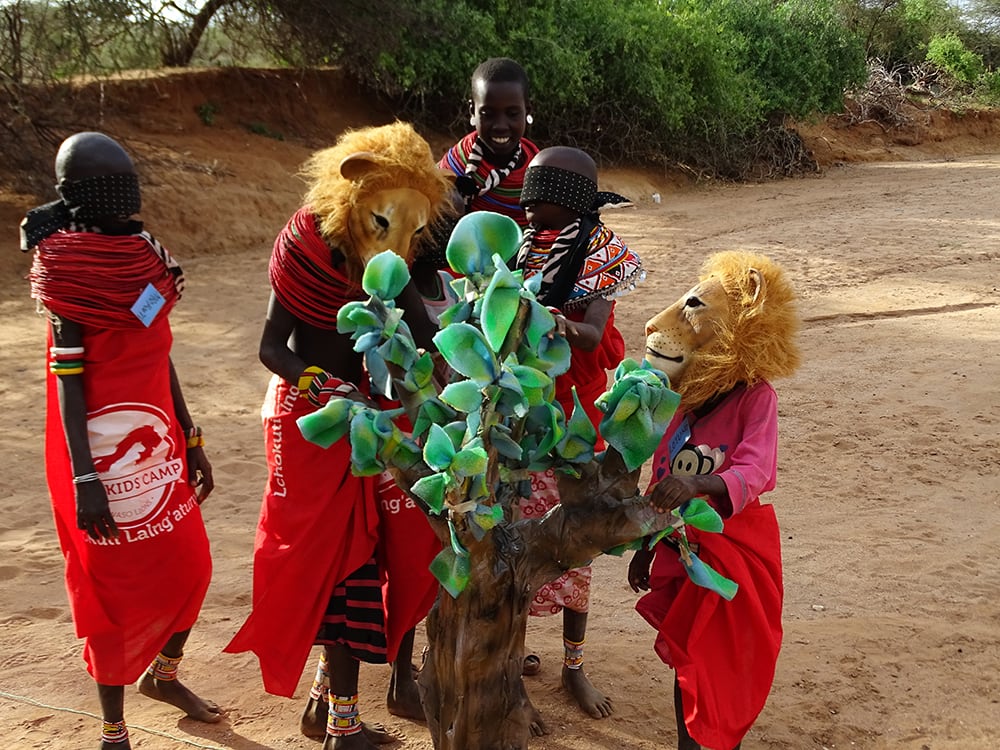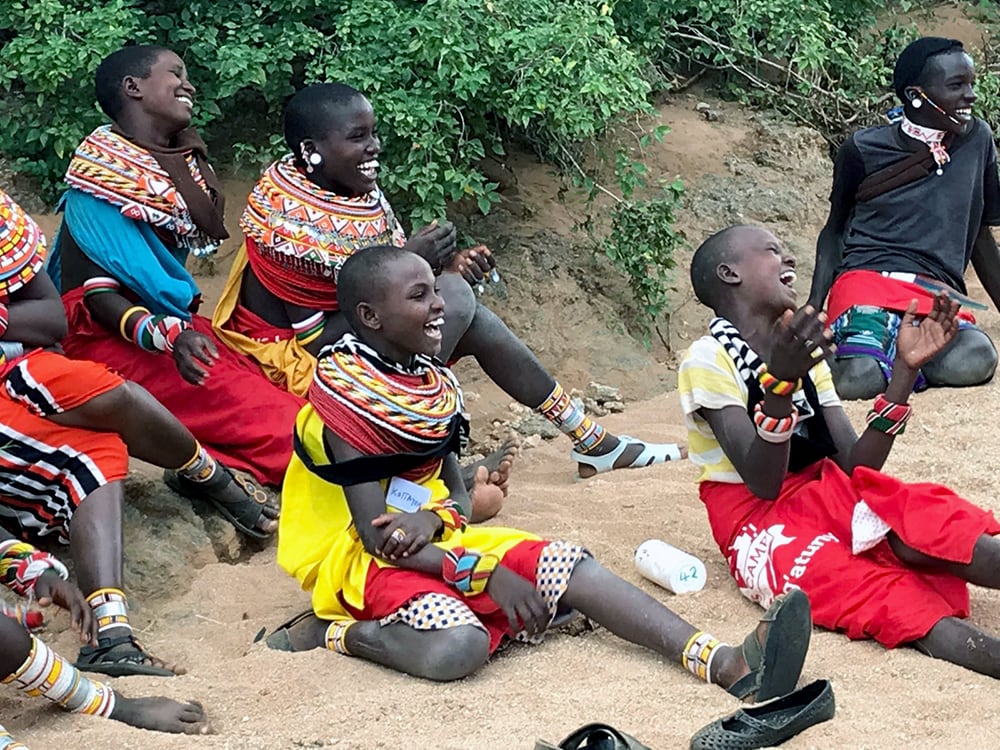Ewaso Lions’ three community programs – Warrior Watch, Mama Simba, and Lions Kids Camp – cut across all genders and age groups. The goals and approach for every program differ but it all comes down to saving lions. To make the work come alive, we often have to remind ourselves about the actual challenges facing lions. What better way to bring the lessons home than to play a game?
With this in mind, we designed the Ewaso Lions Conservation Game in 2015. We began with the aim of teaching local primary children attending our Lion Kids Camps about wildlife conservation. It was initially formulated with school children as the target audience but it has proved to be successful with livestock herders, warriors, women and elders; appealing to both literate and non-literate groups. The game which takes the form of an obstacle course starts with grouping teams who then choose their team leaders. The team leaders are supposed to help the team members who could be acting as either lions, wild dogs, zebras or elephants to move around the obstacles blindfolded. The blindfolded players are expected to navigate to a waterhole and cross a river, kill prey or eat grass, and get to safety while avoiding obstacles a rabid dog, a manyatta with people around it, a burning bush, a herder with his goats, a lost camel, and busy roads just to name a few. Each team takes turns to play the game and the fastest team is the winner.
Whenever the game is being played, there are shouts and screams of joy all around.The people involved get so excited as they cheer their teams and laugh at the goofs of their opponents. The game not only brings people together but also helps players understand the threats and challenges facing lions, and what they need to survive in human-occupied landscapes. They also internalize how different human activities can have positive or negative impacts on lions and their survival, work out how their own actions and decisions can affect lions and survival, and learn which tools/methods they can adopt to promote coexistence between people and large carnivores. This is why the game has been adapted by conservation partners in Uzbekistan, Mozambique, Argentina and Botswana where they use the same concept and adapt it to the lessons and threats facing wildlife in their countries.
We hope that playing this game will lead to a long term goal where the attitudes and tolerance towards lions and other large carnivores improved through conservation, local people inspired to take ownership over lions and their landscapes, and everyone is encouraged to support or adopt positive conservation behaviors that enhance coexistence between people and wildlife. So then it’s safe to say we are promoting coexistence one game at a time!
We’d like to sincerely thank all the people who helped develop this game including Heather Gurd, Danni Parks from the Whitley Fund for Nature for her recent photos. We congratulate Brian Odongo and his team from Kenyatta University for creation of the life-like obstacles used in the game. We continue to be grateful to Cheyenne Zoo, Schultz Engel, Don and Carol, and Prince Bernhard Nature Fund for their continued support for Lion Kids Camp.



